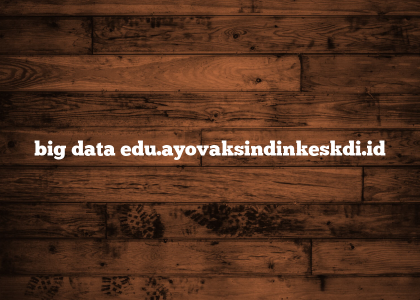___________ are good places to look to find your current expenses when building your budget
Budgeting is the cornerstone of financial success. It’s the roadmap that guides you towards your financial goals, helps you save for the future, and ensures that your hard-earned money is put to good use. But to create a budget that truly works for you, you need to have a clear understanding of your current expenses. In this comprehensive guide, we will take you through the process of identifying your current expenses, equipping you with the tools and knowledge you need to master your money and achieve budgeting bliss.
The Significance of Identifying Current Expenses
Before we delve into the practical steps of identifying your current expenses, let’s take a moment to understand why this is such a crucial aspect of the budgeting process.
Building a Strong Financial Foundation
Imagine your budget as the foundation of a house. To build a sturdy and reliable structure, you need a solid foundation, and that’s exactly what your current expenses represent. Current expenses encompass all the money you’re currently spending on various aspects of your life, such as housing, transportation, groceries, entertainment, and more.
Gaining Insights into Your Financial Habits
Identifying your current expenses provides valuable insights into your spending patterns. It allows you to see where your money is going and whether it aligns with your financial goals. Armed with this knowledge, you can make informed decisions and fine-tune your budget to ensure it reflects your priorities.
Avoiding Financial Surprises
Understanding your current expenses also helps you avoid financial surprises. It enables you to plan for expected expenditures and set aside funds for unforeseen circumstances. When you’re aware of your financial commitments, you can better manage your money and reduce stress related to financial uncertainties.
Strategies and Sources for Identifying Your Current Expenses
Now that we’ve established the significance of identifying your current expenses, let’s explore the strategies and sources that will help you master your money through effective expense tracking.
Review Bank and Credit Card Statements
Your bank and credit card statements are treasure troves of information about your spending habits. Take the time to review your statements for the past several months to track your expenditures. Categorize your expenses into essentials (such as rent or mortgage, utilities, and groceries) and non-essentials (like dining out, entertainment, and shopping).
Pro Tip: Consider using online banking tools or budgeting apps that can automatically categorize your transactions, making expense tracking more convenient.
Organize Receipts and Invoices
Don’t underestimate the power of receipts and invoices. They can be essential in tracking expenses, especially for irregular or occasional ones like medical bills or repair costs. Develop a system to organize and store them, whether physically or digitally.
Collect Monthly Bills
Recurring monthly bills constitute a significant portion of your expenses. Gather all your utility bills, insurance premiums, subscription services, and any other monthly payments you make. These bills offer a clear view of your fixed expenses.
Pro Tip: To avoid missing payments, set up automatic payments or reminders.
Leverage Online Banking and Financial Tools
Many banks and financial institutions provide online tools and dashboards that offer comprehensive insights into your spending. These tools often categorize your expenses, making it easier to identify your spending habits. Make use of these resources to gain a clearer view of your financial landscape.
Explore Mobile Apps and Budgeting Software
In today’s digital age, numerous mobile apps and budgeting software options are available to help you track your expenses. These apps can sync with your bank accounts, credit cards, and other financial accounts to provide real-time updates on your spending. Some popular choices include Mint, YNAB (You Need A Budget), and Personal Capital.
Pro Tip: Experiment with different apps to find one that suits your needs and preferences.
Analyze Cash Transactions
Cash transactions can be more challenging to track since they often lack a digital trail. However, you can account for cash spending by keeping a journal or using a dedicated envelope system for specific expenses. Over time, this method can provide insights into your cash-related outflows.
Review Tax Returns
During tax season, your tax return offers a comprehensive overview of your financial activity for the past year. Review your tax return to understand how much you earned, what deductions you claimed, and any additional income sources you may have forgotten about.
Bringing It All Together
With data from various sources in hand, it’s time to consolidate your information effectively.
Organize Your Data: Categorize your findings into groups such as housing, transportation, food, entertainment, and miscellaneous. This organization simplifies the analysis of your expenses.
Calculate Totals: Determine the total amount you spend in each category over a specified period, whether it’s a month or a year. This step helps you identify your spending priorities.
Identify Trends: Look for patterns and trends in your spending. Are there categories where you consistently overspend? Are there areas where you can cut back?
Set Realistic Budget Goals: Armed with your knowledge of current expenses, set realistic budget goals. Allocate funds to each category based on your priorities and financial objectives.
Track Progress: Continuously monitor your spending against your budget to ensure you stay on course. Be flexible and adjust your budget as needed to accommodate changes in your financial situation.
Conclusion
In conclusion, mastering your money and achieving budgeting bliss begins with the identification of your current expenses. These expenses serve as the building blocks of your budget and provide insights into your financial behavior and priorities. By diligently collecting and analyzing data from various sources, you can create a budget that aligns with your goals and sets you on the path to financial success. Remember that budgeting is an ongoing process, and with commitment and adaptability, you can achieve financial mastery and secure your financial future. So, embrace the journey, unlock the secrets of your spending, and pave the way to financial empowerment.






